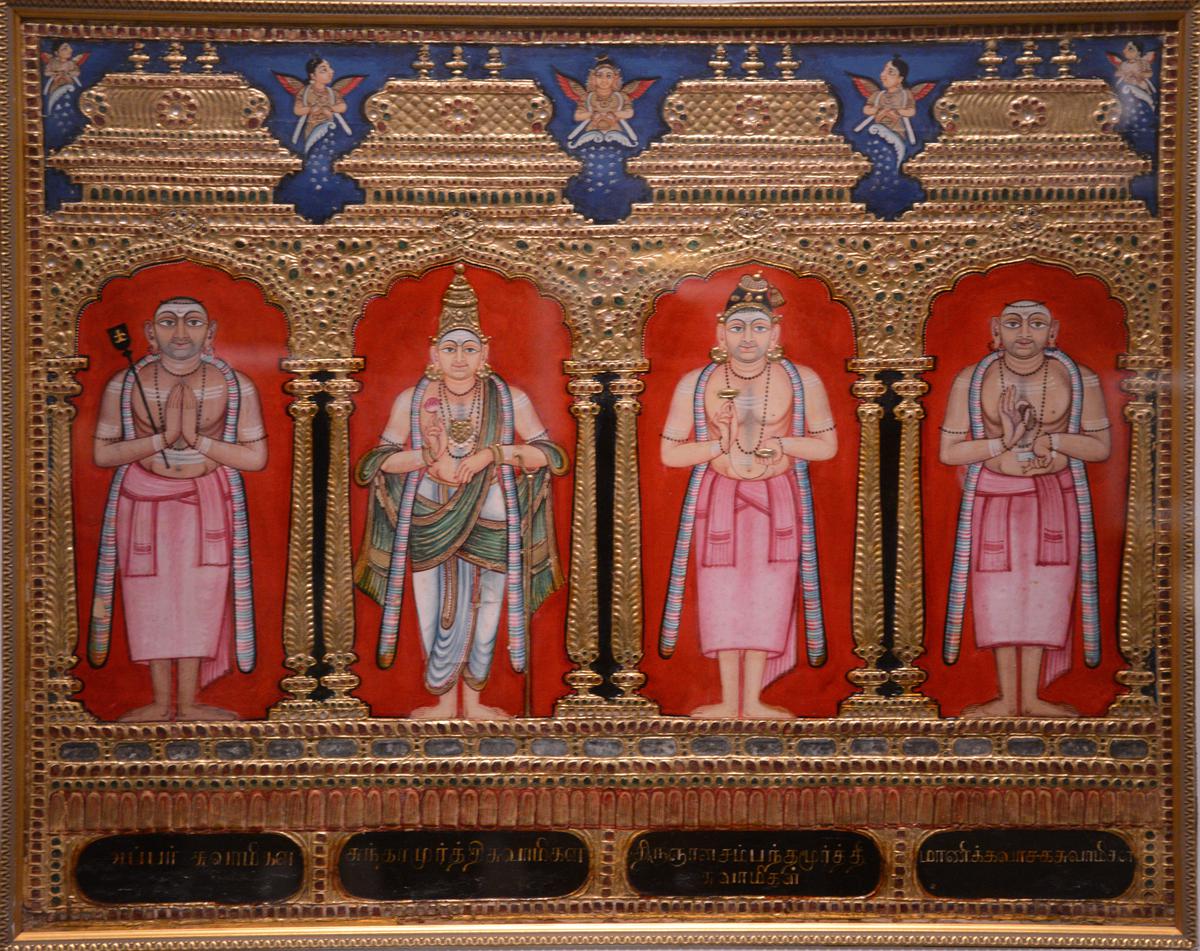
Tirumurai: Verses that capture Tamil culture
The book Tirumurai – Glimpses into Tamil Saiva Poetry, in both Tamil and English, goes beyond devotion to reflect on history, art and tradition
The book Tirumurai – Glimpses into Tamil Saiva Poetry, in both Tamil and English, goes beyond devotion to reflect on history, art and tradition
The Panniru Tirumurai form a very important part of the priceless legacy of ancient Tamil poetry. After the Sangam works, this would perhaps be the next voluminous corpus. The 18,000 verses that it comprises are a valuable archive of not only the creative output of several Saiva saints but also of the various shrines they visited, their observations of life and the evolution of our language. They also provide us information about several other things, including flora and fauna.
In her introduction to the book Tirumurai – Glimpses into Tamil Saiva Poetry (by Sharda Narayanan and Madhangi Rathnavel; published by Ambika Aksharavali), Dr. Sudha Seshayyan, noted scholar and Vice-Chancellor, Tamil Nadu Dr. MGR Medical University, observes that “apart from devotion and unstinted faith, the Tirumurai hymns also encapsulate the history of the Tamil land and tradition, the genesis and development of Tamil Isai, the growth and style of Tamil culture, the habits and lives of Tamil people — in toto, the features and specialities of the Tamil world.” There can be no better summation.
The best way to read the Tirumurai is in the original Tamil, with a good guide to explain the knotty passages. But what happens when people are increasingly cut off from their mother tongue and become dependent on English alone? To such people, Tirumurai, and other such works, are closed books — pieces of display in a museum, to be peered at through glass cases and admired from afar. That is when English primers become necessary, and this book admirably fulfils such a role.
A twelve-part compilation
For those who are not familiar with Tamil literature or poetry, it may be necessary to explain here that the Panniru Tirumurai are, as the name suggests, a 12-part compilation. This was a work in progress for over 600 years as it begins with the Thevaram — the hymns by Sambandar, Appar and Sundarar (the foremost of the 63 Tamil Saivite saints collectively known as the Nayanmar or Arupathumoovar).
The first seven sections of the Tirumurai comprise the works by the above saints. These were compiled in the 11th century by the scholar Nambiyandar Nambi. The eighth Tirumurai is dedicated to the creations of Manikkavachagar, whose timeline is still being debated upon. The ninth Tirumurai comprises the works of nine lesser-known poets of the time of King Raja Raja Chola I (r 992-1014 CE), collectively known as the Tiruvisaippa. The tenth section is dedicated to the Tirumantiram, the deeply philosophical and often esoteric work of Thirumular, a siddha.

The book also contains works of the main four Saivite saints of South India, Sambandar, Appar, Sundarar, and Manickavachagar.
| Photo Credit: Photo: V.V. Krishnan/ The Hindu Archives
The eleventh is a perfect illustration of the blurring lines between the devotees and the Lord, for it includes one verse attributed to Shiva himself. Some of the others in this section are poets, including some of the Arupathumoovar. It also has ten songs by Nambiyandar Nambi. The last section is Sekkizhar’s Periya Puranam, the hagiography of the Arupathumoovar written in the 12th century. Thus, in 600 years, Tamil Saivite religious poetry codified itself.
This 380-page book faithfully follows the structuring of the Tirumurai. By way of an introduction, it takes the readers through a masterly survey of the rise and practice of Saivism, the importance of the Chidambaram temple as a centre for the evolution of Tamil arts, the iconographic representations of Shiva, the development of Pannisai or Tamil Isai. The only negative is the excessive use of Sanskrit terms to explain Tamil equivalents, especially in the introductory passage.
The book then takes up each section of the Tirumurai, with a brief life sketch of the poets featured, followed by selected verses with meaning. At the end of the read, it is very likely that those who have perused this volume will want to delve deeper into the Tamil original. Presenting the lyrics both in Tamil and English is commendable. The usage of diacritical marks in the English script is indicative of much forethought and enables proper pronunciation. Also praiseworthy is the painstaking explanation of the various metres to be found in the Tirumurai. Too often, Tamil publications take such knowledge for granted and merely provide the names of the metres, leaving the bewildered reader to grope around for an explanation.
In recent years, the Divya Prabandham of the twelve Azhwars have seen many English translations. Following the lead of this book, perhaps a complete translation of the Tirumurai too should be taken up.
The Chennai-based author, a historian, writes on music and culture.
Stay connected with us on social media platform for instant update click here to join our Twitter, & Facebook
We are now on Telegram. Click here to join our channel (@TechiUpdate) and stay updated with the latest Technology headlines.
For all the latest Entertainment News Click Here
For the latest news and updates, follow us on Google News.

